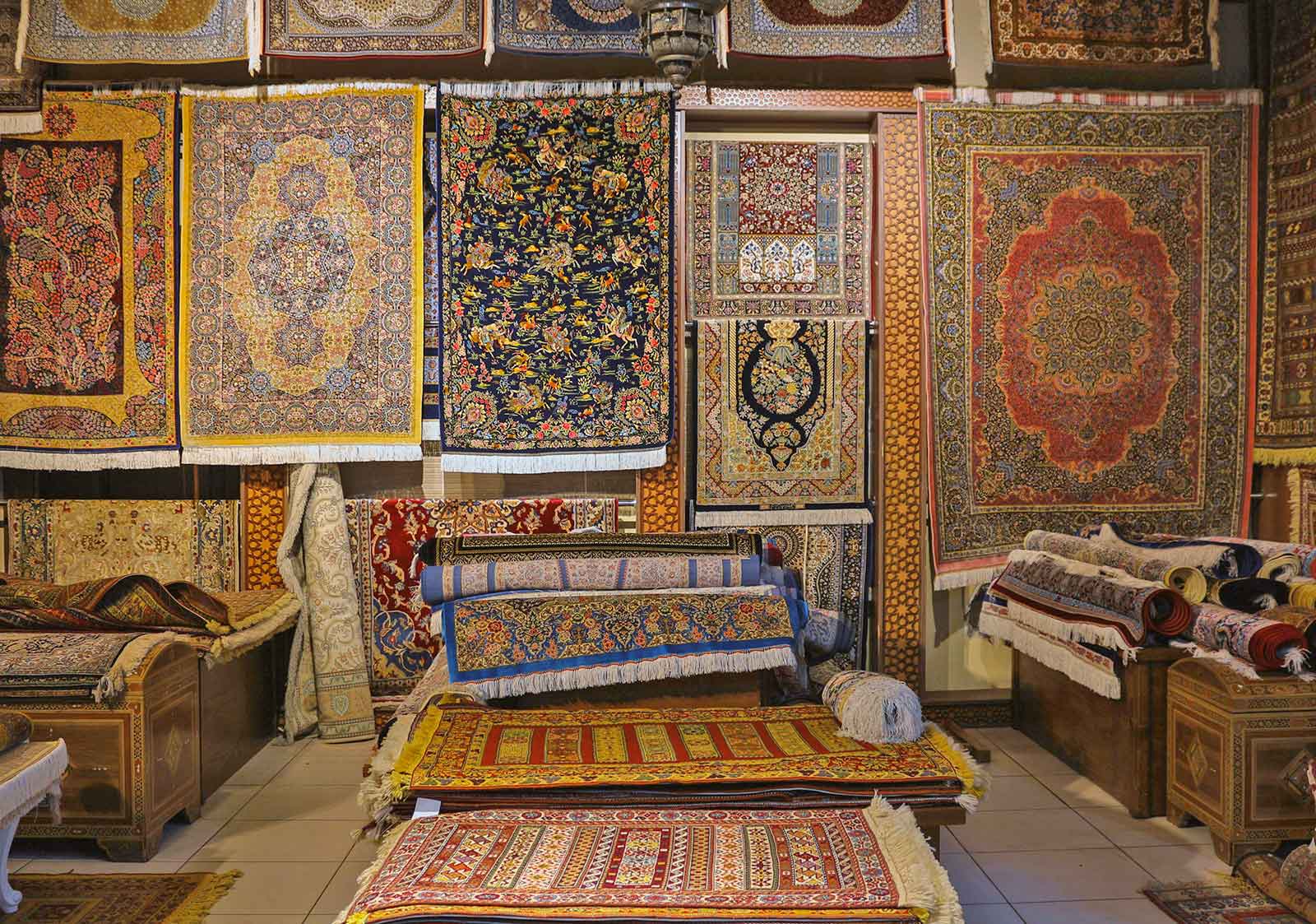
- On 29/11/2024
- In Tips for travellers Turkish Culture
- Tags:
Exploring Turkey’s Rich Textile Heritage: Kilims, Carpets, and More
Turkey attracts admiration across the globe for its deep-rooted tradition of weaving textiles that blend history, culture, and art seamlessly together. Turkish textiles help the visitors to move back in time, be it vibrant kilims or detailed Turkish carpets that they have lifted the standards of artistry in textiles to an entirely different level. It does not matter whether you’re a history buff, a design enthusiast or just seeking a unique gift to take back home, Turkey’s textile techniques are guaranteed to be an incredible experience.

Turkish Kilims and Couple
The Art of Kilims: A Window into Anatolian Culture
Kilims are more than just beautiful and ornamental textile; These are stories that have been woven into threads. These are flat-woven carpets that have decorative patterns and colors and have been a part of the Turkish way of life for hundreds of years. Traditionally, they were used for covering floors, wrapping around walls, and as prayer mats, thus the designs or images are the work of the Anatolian women.
Fun Fact: Each of the patterns on a kilim pattern has a distinct significance ranging from the desire for love to vows for protection to illustrations on success and fertility.
A more in-depth understanding of the kilims and how they are made can be obtained at the Carpet and Kilim Museum in Istanbul. See these wonders in person and learn about the intricate details that go behind every piece that is made.

Turkish Carptes Store
Turkish Carpets: A Symbol of Luxury and Craftsmanship
Needless to add, no account of Turkey’s textiles would sound complete without the mention of its superlative Turkish carpets. These hand-knotted treasures are synonymous with luxury and timeless elegance.
The most notable types include:
- Hereke Carpets – Known for their intricate patterns and double knots.
- Konya Carpets – Praised for their geometric motifs and earthy tones.
- Bergama Carpets – Featuring bold, tribal designs.
Visitors can witness the making of these masterpieces in workshops across Turkey, particularly in Cappadocia and Izmir. Watching artisans meticulously knot each strand will give you a newfound appreciation for the craft.

Istanbul Grand Bazaar Gate
Textile Bazaars: Where to Shop for Authentic Pieces
If you are interested in bringing a piece of Turkey’s textile history home, then bazaars are the places to be. Some of the markets you should check include:
- Grand Bazaar, Istanbul: This historical marketplace has a lot to offer, with over 4,000 shops selling carpets, kilims, and a value of many textiles.
- Old Silk Market, Bursa: Known for the production of quality silk and the exclusive production of scarves.
- Kemeraltı Bazaar, Izmir: Focused on antique textiles and handicrafts of the native people.
Shopping tip: For every purchase made, do not forget to inquire about the country of origin of the textile and for bulk purchases, it is important to demand a certificate of authenticity.

A Woman Weaving a Rug and Rugs.
Preserving the Legacy: Modern Adaptations
While kilims and carpets preserve traditions, more and more innovative Turkish designers are turning to the history of these textiles to develop a new style of interior. Kilim patterned cushions or framed fragments of carpets will perfectly complement any interior design.
For those who prefer Turkish textiles but feel that they have had their fill of classic design, there are numerous custom design workshops that incorporate traditional patterns with modern ideas.

Turkish Rug and Carpet Store
The textile history and culture of Turkey is a narrative that encompasses many tales and abounds in crafts and customs. From the colorful Anatolian kilims to the exquisite carpets Turkish carpets, these textiles are truly the heart of the nation.
Ready to explore Turkey’s rich textile legacy in person? Whether you’re planning a visit to the Grand Bazaar or want to see artisans at work, we’re here to create a personalized tour just for you.



